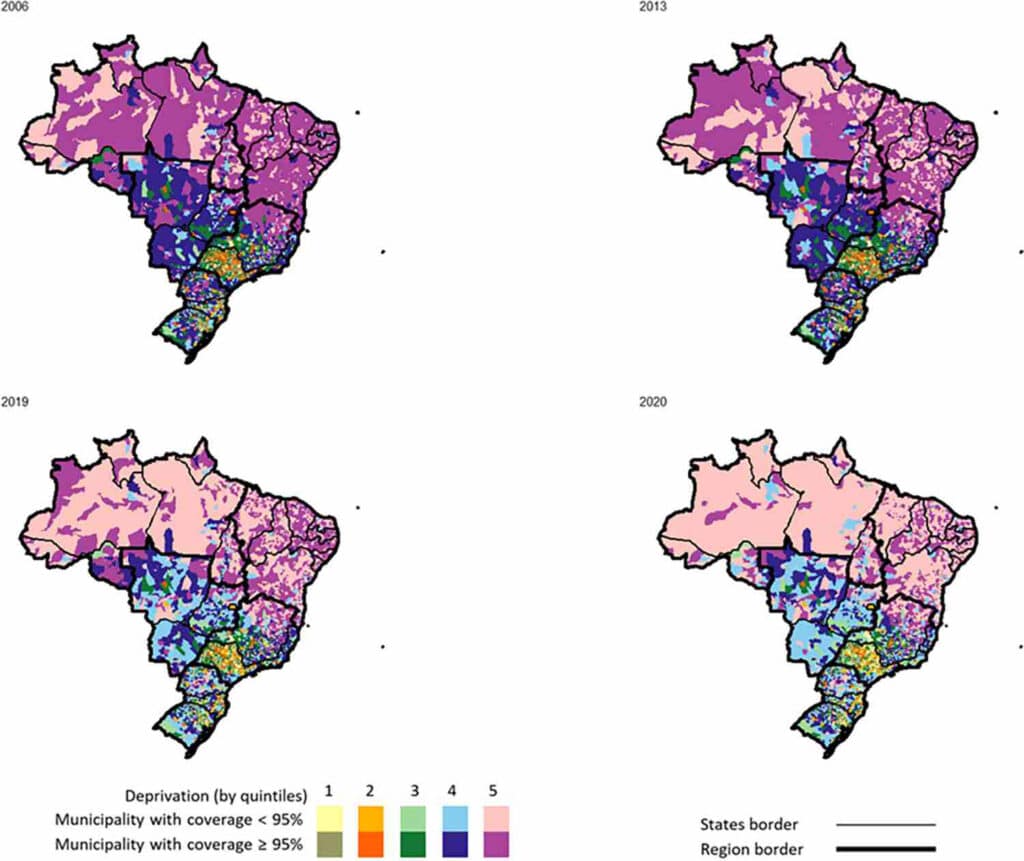Over the past ten years, the coverage of routine children’s vaccinations has plateaued and, in some places, even decreased. Lack of vaccine coverage may increase the prevalence of endemic infectious illnesses and the possibility of locally eradicated infections reappearing.
The MMR trivalent vaccine is the suggested measles-containing vaccine for kids aged 12 months or older in Brazil. Although Brazil has reported regular childhood immunization coverage rates above 95% since the 1990s, rates have decreased since 2015, and a COVID-19 pandemic is expected to blame for an escalation of the declining trends in 2020.
Scientists looked into the link between municipality-level deprivation and measles, mumps, and rubella (MMR) first-dose vaccine coverage better to explain Brazil’s dropping rates of routine childhood vaccination. They did this by using anonymous aggregated data available to the general public.

The Brazilian Ministry of Health’s Unified Health System data registry was used to collect vaccination coverage statistics for the first dose of the MMR vaccine by municipality and year from 2006 to 2020. Based on the information routinely gathered by the National Immunization Program Information System and administratively computed at the municipality level from the number of first doses of MMR vaccine provided divided by the target population, vaccination coverage levels as a percentage were determined.
Scientists plotted the annual mean coverage of the first dose of the MMR vaccine by deprivation quintile, nationally and within each of the five Brazilian regions, to examine temporal patterns from 2006 to 2020. They looked at 5565 localities’ MMR first dose vaccination rates between 2006 and 2020.
Only 4.0% of the municipalities were in the first quintile with the least deprivation, while nearly half (46.1%) were in the fifth quintile with the highest deprivation. Notably, the North and Northeast municipalities were outside the IBP’s top or bottom quintile.
Across all Brazilian areas and quintiles of deprivation from 2006 to 2020, the mean municipality-level MMR vaccine coverage fell by an average of 1.2% per year. The quintile of municipalities with the greatest levels of deprivation experienced higher coverage on average but also the steepest losses in coverage) between 2006 and 2020, as well as the biggest drop in coverage at the start of the COVID-19 epidemic.
Less than 50% of municipalities in Brazil achieved the 95% MMR coverage target in 2020 across all deprivation quintiles and regions. Although the decrease in MMR first-dose vaccination coverage in Brazil is widespread, the poorest municipalities have seen the steepest declines. Understanding the causal mechanisms underlying the observed relationships between municipality-level MMR vaccination coverage and deprivation is crucial to improve vaccine fairness and stop future outbreaks.
Journal Reference:
- Godin A, Pescarini JM, Raja AI, Paixao ES, Ichihara MY, Sato APS, et al. (2023). Municipality-level measles, mumps, and rubella (MMR) vaccine coverage and deprivation in Brazil: A nationwide ecological study, 2006 to 2020. PLOS Glob Public Health 3(8): e0002027. DOI: 10.1371/journal.pgph.0002027
